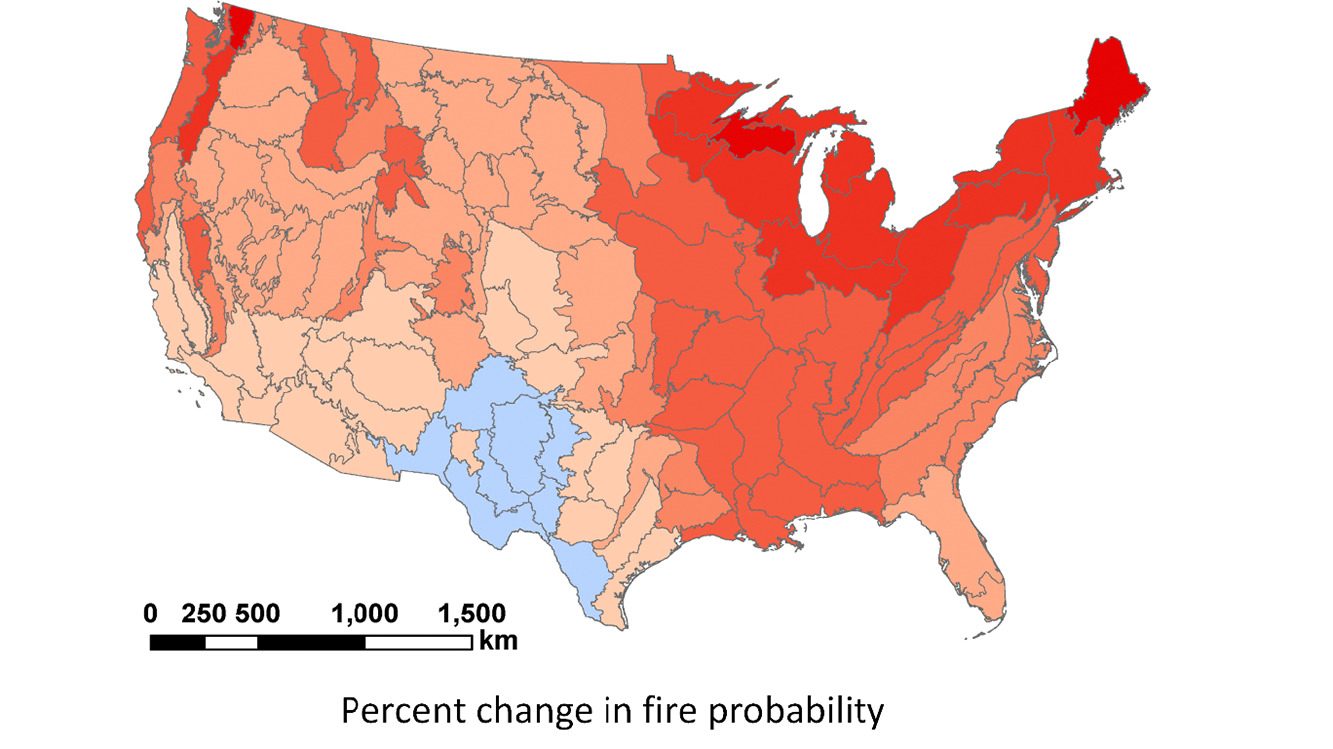Research Projects Shifts in Fire Regimes Through the End of Century

SE CASC Research Ecologist, Adam Terando and SE CASC Consortium PI, John Kupfer, are co-authors to Robust projections of future fire probability for the conterminous United States, published in the Oct 2021 edition of the journal, Science of The Total Environment, and available online May 21.

Highlights
• PC2FM is used to project shifts in 21st century fire regimes due to climate change.
• Fire probability is predicted to increase across the conterminous US.
• Increasing temperatures primarily account for projected rising fire probabilities.
• Pyrome analogs illustrate uncertainty in projections of future fire probability.
• PC2FM provides a useful compromise between empirical and processed-based fire models.
Journal Abstract
Globally increasing wildfires have been attributed to anthropogenic climate change. However, providing decision makers with a clear understanding of how future planetary warming could affect fire regimes is complicated by confounding land use factors that influence wildfire and by uncertainty associated with model simulations of climate change. We use an ensemble of statistically downscaled Global Climate Models in combination with the Physical Chemistry Fire Frequency Model (PC2FM) to project changing potential fire probabilities in the conterminous United States for two scenarios representing lower (RCP 4.5) and higher (RCP 8.5) greenhouse gas emission futures. PC2FM is a physically-based and scale-independent model that predicts mean fire return intervals from both fire reactant and reaction variables, which are largely dependent on a locale’s climate. Our results overwhelmingly depict increasing potential fire probabilities across the conterminous US for both climate scenarios. The primary mechanism for the projected increases is rising temperatures, reflecting changes in the chemical reaction environment commensurate with enhanced photosynthetic rates and available thermal molecular energy. Existing high risk areas, such as the Cascade Range and the Coastal California Mountains, are projected to experience greater annual fire occurrence probabilities, with relative increases of 122% and 67%, respectively, under RCP 8.5 compared to increases of 63% and 38% under RCP 4.5. Regions not currently associated with frequently occurring wildfires, such as New England and the Great Lakes, are projected to experience a doubling of occurrence probabilities by 2100 under RCP 8.5. This high resolution, continental-scale modeling study of climate change impacts on potential fire probability accounts for shifting background environmental conditions across regions that will interact with topographic drivers to significantly alter future fire probabilities. The ensemble modeling approach presents a useful planning tool for mitigation and adaptation strategies in regions of increasing wildfire risk.
Gao, P., Terando, A.J., Kupfer, J.A., Varner, J.M., Stambaugh, M.C., Lei, T.L., Hiers, J.K., 2021, Robust projections of future fire probability for the conterminous United States: Science of The Total Environment 2021–1047, 58 p., https://doi.org/10.1016/j.scitotenv.2021.147872
- Categories:
